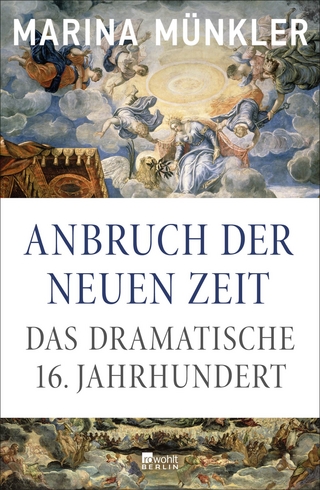
Scientific and Medical Knowledge Production, 1796-1918
Routledge (Verlag)
978-0-367-44374-0 (ISBN)
This volume is divided according to moral themes within medicine and science. The sources represent dominant notes within the culture of knowledge production that capture the moral/emotional/social justification for the making of expertise through experiment. This volume focuses on curiosity, given as the scientist’s chief motivating factor for the finding of new facts, and as an essential character trait for anyone entering the scientific life. It is also the source of controversy and criticism, since curiosity alone increasingly looked amoral at best and immoral at worst, as the nineteenth century wore on.
Rob Boddice, PhD, FRHistS, is Senior Research Fellow at the Academy of Finland Centre of Excellence in the History of Experiences, Tampere University, Finland.
Volume I – Curiosity
Acknowledgements
General Introduction
Volume I Introduction
Part 1. General
1. Ernest Renan, The Future of Science: Ideas of 1848 (London: Chapman and Hall, 1891), 109-16.
2. George Craik, The Pursuit of Knowledge Under Difficulties (London: Charles Knight, 1831), II, 1-3, 121-4.
3. John Frederick William Herschel, Preliminary Discourse on the Study of Natural Philosophy (Philadelphia: Carey and Lea, 1831), 57-64.
Part 2. Medicine
4. Edward Jenner, In Inquiry into the causes and effects of the variolae vaccinae: a disease discovered in some of the western counties of England, particularly Gloucestershire, and known by the name of the cow pox (Private printing, London: first published, 1798, this edition 1800), 9-36.
5. Emma Hardinge Britten, The Electric Physician: or Self Cure through Electricity (William Britten: Boston, 1875), 3-6.
6. Walter Bradford Cannon, A Laboratory Course in Physiology (1911; 4th edn, Cambridge: Harvard University Press, 1923), xv-xvi.
Part 3. Galvanism
7. John Aldini, An Account of the Galvanic Experiments performed by John Aldini on the Body of a Malefactor (London: Cuthell and Martin, 1803), 1-34.
8. John Aldini, An Account of the Late Improvements in Galvanism (London: Cuthell and Martin, 1803), 101-7, 110-12.
Part 4. Chemistry/Physics
9. Claude Louis Berthollet, An Essay on Chemical Statics (London: J. Mawman, 1804), I, vii-xiv.
10. John Dalton, A New System of Chemical Philosophy (1810).
11. Michael Faraday, Chemical Manipulation; being instructions to students in chemistry, on the methods of performing experiments of demonstration or of research, with accuracy and success (1827), i-ix.
12. Justus Liebig, Instructions for the Chemical Analysis of Organic Bodies (Glasgow: Richard Griffith, 1839), 1-13.
13. Justus Liebig, Animal Chemistry, or Organic Chemistry in its application to Physiology and Pathology (New York: Wiley, 1848), ix-xix.
14. Justus Liebig, ‘Autobiographical Sketch’, The Popular Science Monthly, 40 (1892-3), 655-66.
15. George Gore, The Art of Scientific Discovery; or, The General Conditions and Methods of Research in Physics and Chemistry (London: Longmans, Green, and Co., 1878), 306-24, 372-97.
16. Arthur Mason Worthington, A First Course of Physical Laboratory Practice (London: Longman, Green, and Co., 1890), 12-26.
17. Horace Lemuel Wells, A Laboratory Guide in Qualitative Chemical Analysis (New York: Wiley, 1898), iii-iv.
18. Marie Sklodowska Curie, ‘Radium and Radioactivity’, Century Magazine (1904), 461-6.
19. Ernst von Meyer, A History of Chemistry from Earliest Times to the Present Day (London: MacMillan, 1906), 6, 96-9, 217-18.
20. Svante Arrhenius, Theories of Chemistry: Being Lectures Delivered at the University of California, in Berkeley (London: Longmans, Green, and Co., 1907), 1-11.
21. Svante Arrhenius, Theories of Solution (New Haven: Yale University Press, 1912), xvii-xx.
Part 5. Astronomy
22. John F.W. Herschel, A Treatise on Astronomy (London: Lonman, Rees, Orme, Brown, Green & Longman, 1833), 1-9.
23. John F.W. Herschel, Results of Astronomical Observations made during the years 1834, 5, 6, 7, 8, at the Cape of Good Hope (London: Smith, Elder and Co., 1847), v-xx.
24. Agnes Mary Clerke, A Popular History of Astronomy During the Nineteenth Century (Edinburgh: Adam & Charles Black, 1885), 1-10.
25. Eliza Bowen, Astronomy by Observation: An Elementary Text-Book for High-Schools and Academies (New York: D. Appleton, 1888), 5-8.
Part 6. Anthropometry/Eugenics
26. British Association for the Advancement of Science Final Report of the Anthropometric Committee (London: Spottiswoode, 1883), 1-3.
27. Alexander Graham Bell, ‘Sheep-Breeding Experiments on Beinn Bhreagh’, Science, 36 (1912), 378-84.
Part 7. Physiology
28. Lydia Folger Fowler, Familiar Lessons on Physiology: Designed for the Use of Children and Youth (New York: Fowlers and Wells, 1848), I, 135-8.
29. Thomas Henry Huxley, Lessons in Elementary Physiology (London: MacMillan, 1868), vii-ix.
30. Thomas Henry Huxley, Lessons in Elementary Physiology (London: MacMillan, 1885), v-vi.
31. Henry Head and William Halse Rivers, ‘A Human Experiment on Nerve Division’, Brain (1908), 324-42.
32. Edward Sharpey Schafer, Experimental Physiology (London: Longmans, Green, and Co., 1912), vi, 1.
Part 8. Biology/Botany
33. Emily L. Gregory, ‘The Old and New Botany’, Botanical Gazette (1887), 253-4.
Part 9. Psychology
34. Mary Whiton Calkins, A First Book in Psychology (New York: MacMillan, 1910), 6-8.
Index
| Erscheinungsdatum | 20.07.2023 |
|---|---|
| Zusatzinfo | 2 Tables, black and white; 33 Halftones, black and white |
| Verlagsort | London |
| Sprache | englisch |
| Maße | 156 x 234 mm |
| Gewicht | 725 g |
| Themenwelt | Schulbuch / Wörterbuch ► Lexikon / Chroniken |
| Geschichte ► Allgemeine Geschichte ► Neuzeit (bis 1918) | |
| Geisteswissenschaften ► Geschichte ► Regional- / Ländergeschichte | |
| Naturwissenschaften | |
| ISBN-10 | 0-367-44374-0 / 0367443740 |
| ISBN-13 | 978-0-367-44374-0 / 9780367443740 |
| Zustand | Neuware |
| Informationen gemäß Produktsicherheitsverordnung (GPSR) | |
| Haben Sie eine Frage zum Produkt? |
aus dem Bereich


